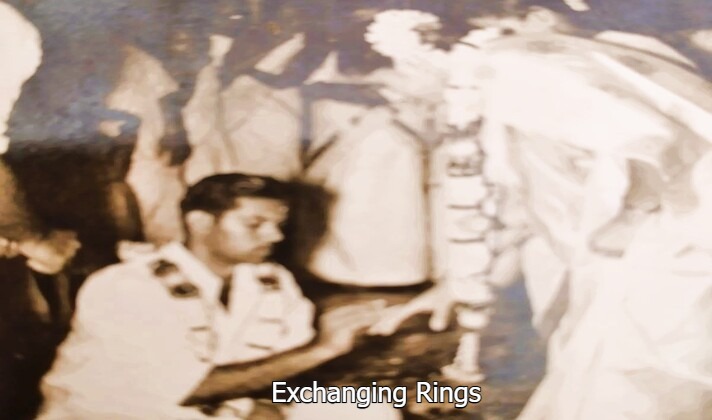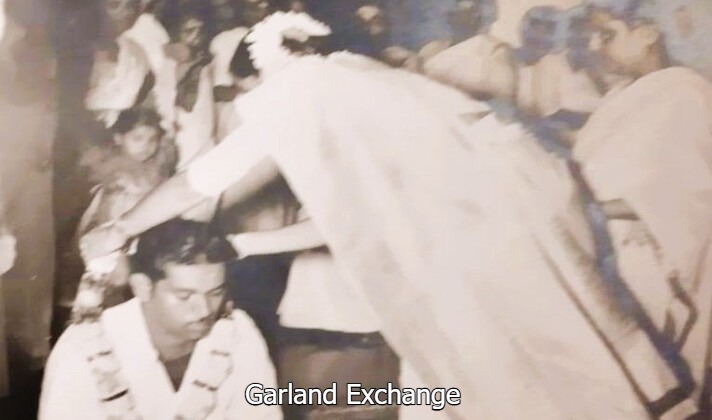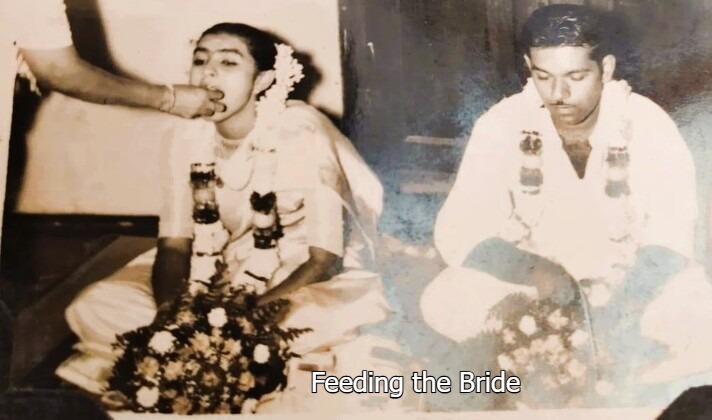The much-awaited Part 3 of ‘Ende Keralam’. Enjoy!
We were lucky to witness the wedding ceremonies of some of our aunts, which were conducted in the sprawling Kovilakam itself. Weddings were then truly family events.
Festivities would start more than a week earlier. There would be a steady stream of guests—neighbours and relatives—dropping in. They would be treated to a standard fare of laddoos,( sweets balls of flour and sugar ) and ‘mixture’, (a crispy,crunchy savoury). Then came the customary display of the bride’s jewellery and saree to the excited and curious female guests—an exhausting ritual that invariably left the outfit a wrinkled mess.
The excitement of decoration gripped us soon after. A huge pandal (shamiana-like structure) was put up three to four days before the wedding. The uncles headed the decoration team, which was an in-house job. Pots of homemade glue were readied. Reams of silver, gold and coloured paper were cut into strips, stuck on to jute ropes and hoisted onto the roof of the pandal. The poles were also covered with strings of these papers. The continuous rustling of the paper streamers added to the sounds of the festivities.
The wedding eve was most exciting. Many petromax lights appeared on the scene; mammoth metal vessels and urulis or cauldrons, lying in the storeroom came out of their hibernation. Hired tables and chairs were strewn around and we had to help in arranging them. These preparations went late into the night, as we nibbled on the snacks and sweets after a special wedding eve dinner.
We children had so much fun taking in all the different activities—the caterers noisily preparing for the wedding feast; preparation of the mandapam (the area where the wedding took place) with the carpeting, the lamps, readying the thaalams (auspicious pooja plates with lamps, tamboolam and flowers), the para to be filled with paddy and coconut fronds, and so on.
Then there was the dakhshina ceremony when the bride sought the blessings of the elders in the family. Late into the night an uncle from abroad would treat us to a slide show of memorable old photographs on his projector screen,which had us kids all excited and giggling!
The big day was a bustle of activity, with guests arriving crammed in ambassador cars or private vans. Young girls dressed in silk pavadais or half sarees (traditional Kerala dressing) eagerly greeted guests with little tiny floral bouquets of marjoram and purple vaadamalli flowers and a sprinkling of rose water. The heady smell of tuberose (lily), jasmine and roses pervaded the air.
Unlike the caparisoned Malayali brides of today, brides in those days were usually dressed in a Benaras silk saree and adorned minimal gold jewellery. The guests too turned up in traditional, sober attire. The wedding ceremony was brief with simple rituals. The bride and groom were separately escorted to the mandapam by thaalam-bearing young girls. The groom tied the thaali (holy matrimonial thread) as the older women ululated in celebration. Rings and floral garlands were exchanged, and the gifting of the pudava by the groom to the bride completed the ceremony.
The sadhya or feast was served on banana leaves placed on the floor and tables were only for special and older people. Over-sized pappadams, steaming red rice served from cane baskets and special payasams added to the thrill of the feast. Trays of bananas, lemons, betel leaves, and cigarettes would be arranged on tables as post-lunch treats.
Most guests left after lunch and only family members lingered on. We could not wait to unwrap the wedding gifts by late evening. It was great fun as we would try to guess what each package would contain. Gifting habits had a seasonal touch—with many guests bringing the same gift—so the bride ended up with five or six milk cookers, casseroles and steel vessels and so on!
The decorations, pandal and lighting would all be taken away the next day and the house would be back to normal. The bride would leave for the groom’s house escorted by her uncle and aunt with box loads of sweets and chips made of banana and jack fruit as gifts for the groom’s family.
A simple no-fuss celebration with total in-house participation and involvement was what made weddings in those days different and more memorable than the extravagant outsourced events of today.
THIRUVATHIRA CELEBRATIONS
We never had a chance to enjoy Onam celebrations in Kerala. However, our December vacations held special significance for us as we could be a part of the Thiruvathira festival celebrating Lord Shiva and his consort, the goddess Parvathy.
This festival is largely celebrated by women in Kerala and has many unique rituals and traditions. At Grandma’s house, Thiruvathira arrangements would be readied a week ahead. Swings would be put up—a low one for the kids and a tall one for the adults. Then there were the week-long rehearsals for the special kaikottikali dance for the girls and ladies. It was riotous fun, learning the lyrics and the langurous dance steps.
On their part, the boys had their own fun creating parodies of the lyrics and dance. These rituals went on for two days. Fasting—meaning a rice-free diet—was observed by mothers for two days and by all women and young girls on Thiruvathira day for the well-being of their husbands and family. Strangely, a rice-free diet made us ravenous all day.
The kitchen would have stocked up on chips, pappadams and steamed plantains. Balls of flattened rice mixed with banana, jaggery and coconut were a favorite. On Thiruvathira eve we would all be dressed in traditional wear and spend hours playing on the swing. Later, at dusk we would perform the much awaited kaikottikali dance around a lighted lamp in the front yard, with much enthusiasm and gaiety.
After dinner, we would lounge around, chatting and exchanging stories or gossip to stay awake all night for the early morning rituals. Around midnight, the matriarchs would hand us home-made kajol/kohl for the eyes and dashapushpam (small potlis of 10 sacred flowers) to adorn our hair. We would venture out towards the pond around 3.30 in the morning with torches made of lit, dried coconut leaves and indulge in a special bathing ritual called thudichu kulickal with much splashing around in the water. We would walk down in a big group, dressed in new clothes, to the nearby Shiva temple by 4 am.
We returned to a heavy breakfast of steamed plantains and wheat dosas. The lunch menu was special—steamed broken wheat and a special puzhukku made of a mixture of native root vegetables in coconut paste. This was topped with varieties of chips and pappadams. A special dessert made of Arrowroot powder with jaggery and coconut was another unique dish of this festival. Our favorite ritual was to chew 101 betel leaves over the morning hours and it was a challenge that we all raced to finish……So many meaningful and unique rituals that, unfortunately, are now mere memories for us.
Looking back, it seems that we are perhaps the only generation that enjoyed the best of two worlds—having grown up rooted in traditions and rituals, savouring simple pleasures of life with family and friends, feeling wonder, awe and magic in little things—and today, have moved on to adapt and adopt a lifestyle driven by the luxury and reach of technology with the same sense of wonder and appreciation.







Comments (2)
Janu, I was literally transported to those beautiful times we had. You have captured those memories so well that I could actually smell those lilies and taste those mouthwatering ladoos. Yes, those were the best years of our lives and while reading your blog all those wonderful memories came alive.
Great writing. Took me down the memory lane and refreshed all the glorious times of old. Thank you Janaki for the memory ride. Keep the blogs comings. Waiting eagerly for the next one